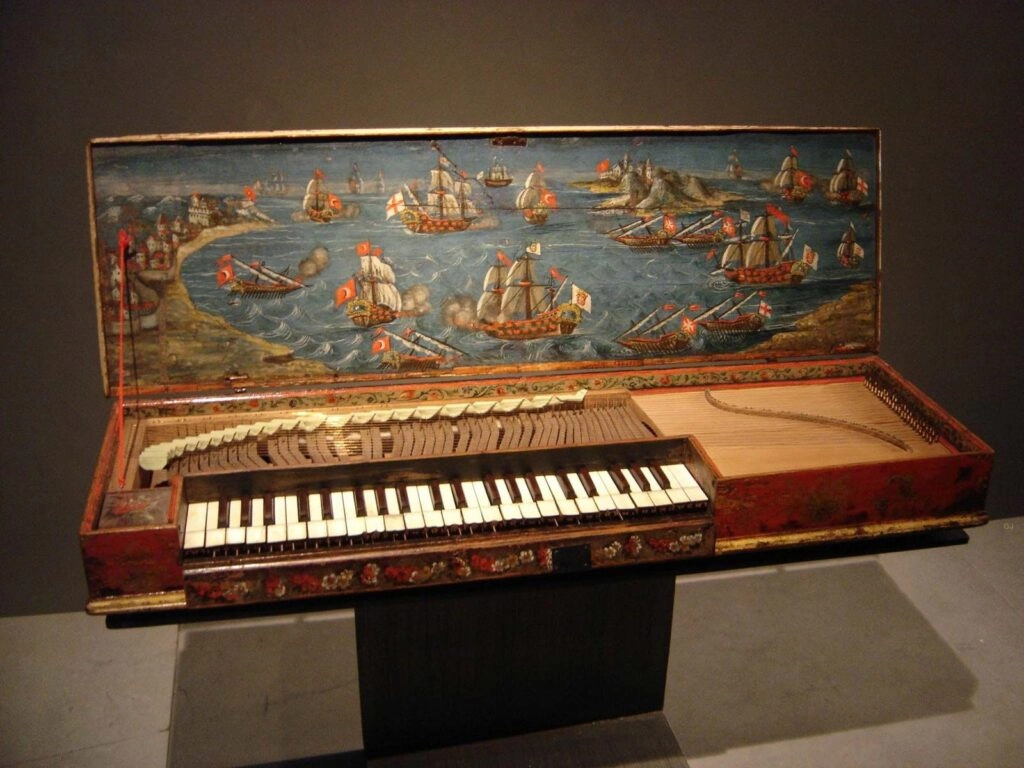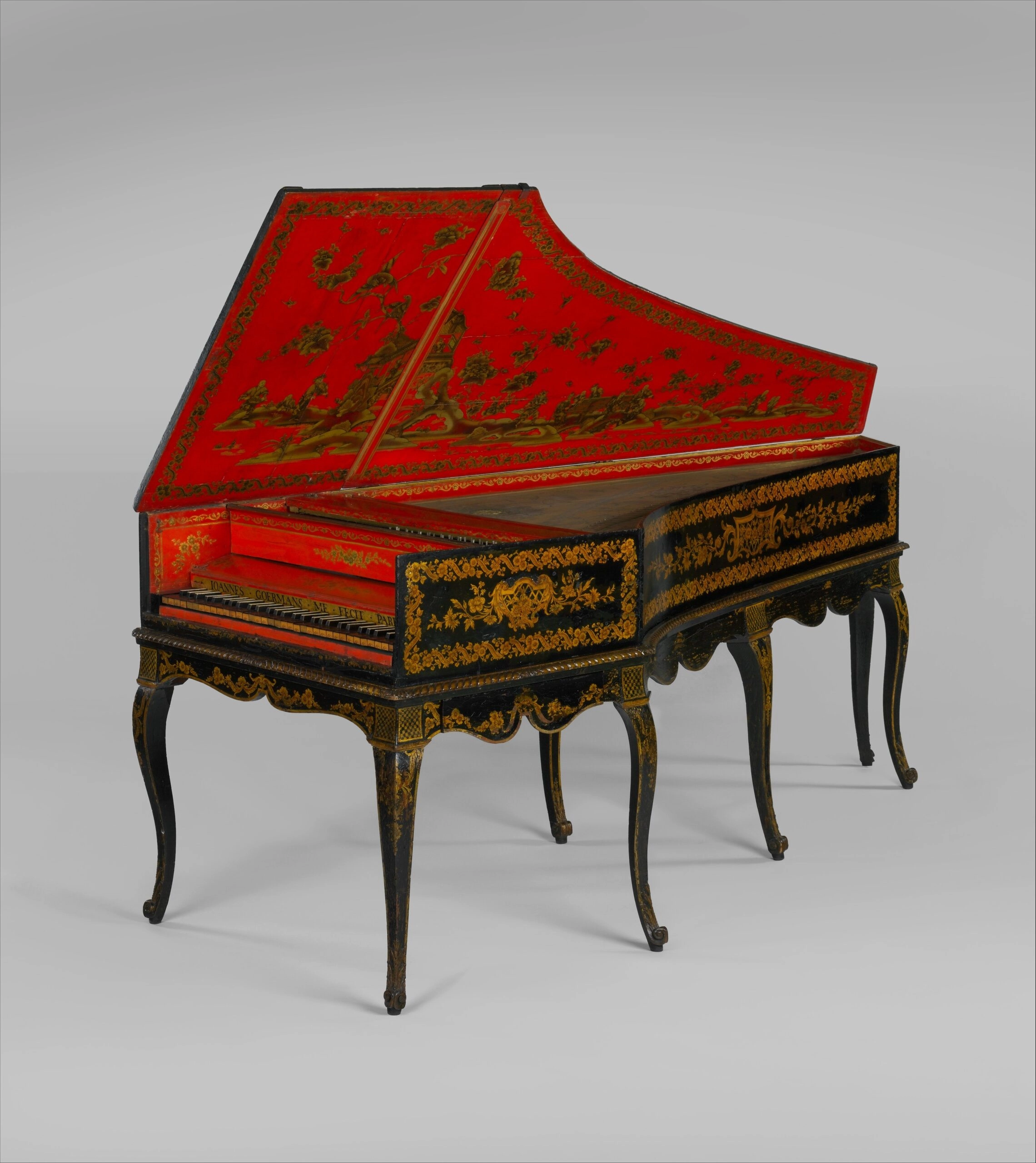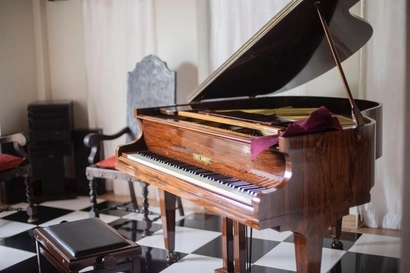A piano or keyboard is a soulful and gorgeous musical instrument. The keyboard is one of the most popular instruments around the world. And we all know the reasons behind it.
But, have we ever thought about the origin of it? Or who invented the piano? Food for thought, right? Knowing the history of the keyboard will make you feel closer to the instrument.
Even if you are just a dedicated listener, you can boast about the cool facts in front of your friends. Whatever it is, before sitting for your piano practice today, let's get familiar with the origin, invention, and evolution from harpsichord to modern Piano, AKA keyboard.
- When Was The Piano Invented?
- The Origin of Piano
- The Origin of Modern Day
- Evolution of Modern Piano
- Conclusion
- FAQ’s
- 1. What is the origin of the piano?
- 2. How did the piano evolve over time?
- 3. What are the key components of a piano?
- 4. Who were some influential composers that used the piano?
- 5. How has the piano influenced music genres?
- 6. What is the difference between a grand piano and an upright piano?
- 7. Why is the piano considered a versatile instrument?
- 8. What role did technology play in the piano’s development?
- 9. Are there different types of pianos available?
- 10. How can I learn to play the piano?
When Was The Piano Invented?
Unlike most other popular instruments these days, the keyboard roots for its origin almost three hundred years back. The first record of the first piano (after harpsichord) appears in the early decades of the 1700s in Italy.
However, the evolution of the modern-day keyboard started way earlier. According to music historians, the evolved version of the keyboard came from a monochord instrument.
It has changed its shape and appearance many times, till it became what we know as a modern-day keyboard. Early keyboard and string instruments such as the Clavichord (invented in 1400CE) and the Harpsichord (invented in 1521CE) were well-developed by the 17th century, but they did not offer the capabilities that the keyboard did.
The modern piano was developed and invented in Florence, Italy, around 1700 by the expert Italian harpsichord maker Bartolomeo Cristofori. Although it resembled a modern-day keyboard, it wasn't the same.
The invention of the modern piano by inventor and organ builder Bartolomeo Cristofori was unique because it was the first keyboard of its kind that could play both high and soft tunes.
The Origin of Piano

Surprisingly, the keyboard or, in general, a keyboard can be identified as a string instrument, as the sound is generated from the vibration of the strings.
It is also classified as a percussion instrument because a hammer is used to strike the strings in the piano. In fact, it would be appropriate to identify it as both a string and percussion instrument, similar to the Dulcimer.
Now, let's talk about Dulcimer, as it is arguably the predecessor of the keyboard. It is an instrument developed in the Middle-Eastern countries and then spread to all over Europe in the early 11th century.
This instrument comes with a simple resonating box with strings tightly wrapped over it. Unlike a piano, a manual hammer was used to strike the strings to generate sound from it. For all of these reasons, Dulcimer is considered as the direct ancestor of a keyboard, according to music historians.
1. The Clavichord

As we have already discussed, the piano can also be classified as a keyboard instrument. The most ancient keyboard instrument was the organ. You may have seen it in the pictures. An organ used to be played by sending a burst of air through the pipes.
Craftsmen developed this instrument into something a step closer to the keyboard, Clavichord. Its origin was traced back to the 14th century, and it was a very popular instrument during the time of the Renaissance Era, well, at least until Bartolomeo Cristofori created history.
According to many historians, this was the founding stone for a modern-day keyboard. If you inspect closely, the piano we see today resembles the attire of Clavichord. However, it was a basic construction. You could only play sound over a range of four to five octaves. It didn't contain a hammer or even a pedal back then.
2. The Harpsichord

The harpsichord is considered the closest to the complex modern-day piano. Upon its invention in the 1500s, the harpsichord spread all over Germany, France, and Great Britain.
In this instrument, when you press a key, a plectrum plucks the string much like a guitar to make the music. The plectrum was called a jack. This instrument, not only by looks but also by structure, resembles a grand piano.
Unlike modern piano or keyboard developed by Bartolomeo Cristofori, providing different scales or volumes had never been harpsichord's forte. This was the closest resemblance to the keyboard we use these days. However, harpsichord pianos didn't contain a hammer or pedal.
The Origin of Modern Day
Piano Bartolomeo Cristofori made the first modern-day keyboard, which could play both soft and high pitch notes. Plus, we have to give credit to the Steinway company for developing the modern piano.
The specialty of this variant was that it was the first one to replace the jack with the hammer and include pedal, which is the fundamental of the grand piano, upright piano, or digital piano or keyboard we play.
This was the start of a new era for western music. A piano or keyboard is undoubtedly a complex instrument, but it offers so much freedom to the musicians.
That's why it attracted almost every legendary composer starting from Mozart and Beethoven to the modern-day genius composer Philip Glass or the prodigious pianist Lang Lang.
Evolution of Modern Piano
It almost seems unreal how much pianos have evolved over the course of time, from lute to harpsichord and 'fortepiano' to modern-day electric piano. Modern pianos can be classified into two significant categories - acoustic piano and electric piano.
1. Acoustic Piano
The direct successor of the 'pianoforte,' acoustic pianos are hybrid (percussion and string) instruments. These instruments generate sound with hammers covered with felt of leather hitting on the steel strings. There are two types of acoustic pianos - upright piano and grand piano.
Upright Piano
Upright pianos are visibly different from grand pianos as these are significantly smaller than grand pianos. The mechanism of an upright piano is fundamentally different than a grand piano.
The strings and the soundboard plane are placed vertically, perpendicular to the keyboard on an upright piano. Piano luthier John Isaac Hawkins made the first modern upright piano in around 1800. The sound of upright pianos is lighter, and the feel of the keys is different than grand pianos.

There are three types of upright pianos, depending on their height -
Spinet Piano Spinet pianos are
Spinet pianos are developed around the 1930s, and these are the smallest upright pianos with heights ranging from 35 to 40 inches.
Console Piano
Slightly bigger than spinet pianos, console upright pianos are the most popular type of upright pianos. The height of a console piano ranges from 40 inches to 44 inches.
Console pianos are easy to assemble and come with a better hammer and key coordination. Brands like Yamaha, Baldwin, Kawai, etc., manufacture the best console pianos, and these instruments are widely used in recording studios.
Studio Piano The mechanism of studio pianos is a bit
The mechanism of studio pianos is a bit different than console and spinet pianos. However, these still fall under the upright piano category. The height of a studio piano varies from 43 to 47 inches mostly. Unlike the other two, studio pianos are heavily used in the professional sphere.
Grand Piano
These are the direct successors of the fortepiano. Grand pianos are considered the standard pianos. Although most people can't afford a grand piano, these are insanely expensive.

Many pianists believe that grand pianos offer the most authentic and beautiful sound. The key and hammer mechanism are placed horizontally on the wide back of the piano.
A standard grand piano comes with 88-keys (52 white and 36 black). Grand pianos are divided into 7 categories according to their sizes -
2. Seven categories of Grand Piano
Petite grand: 4′ 5″ to 4′ 11″
Baby grand: 5′ to 5.5′
Medium grand: 5′ 6″ to 5′ 8″
Professional grand: 5′ 9″ to 6′ 2″
Parlor grand: 6′ 3″ to 6′ 10″
Semi-concert grand: 6′ 11″ to 7′ 8″
Concert grand: 8′ 11″ to 9′
3. Digital/Electronic Piano
The latest addition to the piano family is a digital piano. Although it is called a piano, many pianists and music experts refuse to consider it a piano and instead call it a keyboard.
Digital pianos resemble the sound of grand pianos. Expensive digital pianos also come with weighted keys, just like acoustic pianos. However, they don't come with foot pedals. These instruments are widely used for live concerts, recording, and composing.



Conclusion
In conclusion, carefully crafting your blog content is essential for engaging your audience and achieving your blogging goals. Whether you are sharing personal insights, providing valuable information, or promoting a product, ensuring clarity, relevance, and authenticity will resonate with your readers. Regularly reviewing your content strategy and adapting to feedback will keep your blog fresh and engaging. Remember, the journey of blogging is ongoing, and consistent effort and creativity will lead to continued success. Happy blogging!
FAQ’s
1. What is the origin of the piano?
The piano originated in Italy during the early 18th century. Bartolomeo Cristofori, an instrument maker, is credited with inventing the first piano, known as the "gravicembalo col piano e forte," around 1700.
This instrument was designed to play music at different volumes, which was a significant advancement over its predecessors, like the harpsichord.
2. How did the piano evolve over time?
The piano has undergone several changes since its invention. Initially, pianos were built with wooden frames and strings made of gut. By the late 19th century, advancements in metallurgy allowed for iron frames and steel strings, significantly enhancing the instrument's durability and sound.
The development of the upright piano and the grand piano also contributed to its evolution, catering to different musical needs and spaces.
3. What are the key components of a piano?
A piano consists of several key components:
Keys: Usually 88 in total, they produce different pitches when struck.
Action mechanism: This includes hammers that strike the strings when keys are pressed.
Strings: Made of either steel or copper-wound materials, they create sound vibrations.
Pedals: There are typically three pedals, which modify the sound by altering the instrument's resonance.
4. Who were some influential composers that used the piano?
Many composers have made significant contributions to the piano repertoire, including:
Ludwig van Beethoven: Known for his innovative compositions and piano sonatas.
Frédéric Chopin: Renowned for his expressive and technically demanding piano works.
Johann Sebastian Bach: His music laid the groundwork for many piano compositions.
Claude Debussy: He brought Impressionism to piano music, exploring new harmonies and textures.
5. How has the piano influenced music genres?
The piano has played a crucial role in various music genres, including classical, jazz, pop, and blues. It serves as a versatile instrument for composition, accompaniment, and solo performances. In jazz, for example, the piano is central for improvisation; in pop, it provides melodic and harmonic support for songs.
6. What is the difference between a grand piano and an upright piano?
A grand piano has horizontally arranged strings and a larger soundboard, which produces a richer sound and allows for greater dynamic range. It is typically more suitable for concert performances. An upright piano, with vertically arranged strings, is more compact and often used in homes due to its space-saving design. The sound may not be as powerful as that of a grand piano, but it remains popular for practice and casual play.
7. Why is the piano considered a versatile instrument?
The piano is considered versatile because it can play melody, harmony, and rhythm all at once. It can accompany singers and other instruments or be performed as a solo instrument. Its wide range of notes and ability to express complex emotions make it suitable for various musical styles and settings.
8. What role did technology play in the piano’s development?
Technology has significantly influenced the piano's development, particularly in manufacturing techniques. The introduction of metal frames allowed for higher string tension and better tuning stability. Innovations like the player piano and electronic keyboards further expanded the possibilities of piano music, enabling new forms of composition and performance.
9. Are there different types of pianos available?
Yes, there are several types of pianos available, including:
Grand Piano: Largest, offers superior sound quality.
Upright Piano: Space-saving design, suitable for home use.
Digital Piano: Electronic version that simulates acoustic sounds.
Stage Piano: Designed for live performances, often lightweight.
10. How can I learn to play the piano?
Learning to play the piano can be accomplished through various methods:
Private lessons: Working with a qualified teacher for personalized guidance.
Online courses: Many platforms offer video tutorials and structured lessons.
Self-teaching: Using books, apps, or online resources to learn at your own pace.
Group classes: Joining community classes for social interaction and motivation.
By following these avenues, you can begin your journey to mastering the piano!


Comments